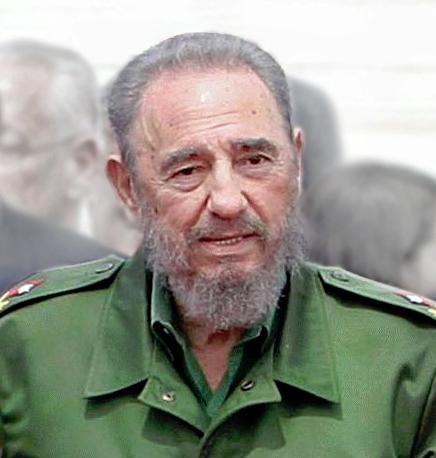Is it goodbye, or good riddance?
The death of Fidel Castro

At the age of 90, former president of Cuba, Fidel Castro, died on November 25, 2016. Some people are mourning his death, while others are celebrating the idea of possible freedom from communism in Cuba.
December 1, 2016
On Friday, November 25, former president and revolutionary icon of Cuba, Fidel Castro, passed away at the age of 90. Throughout his lifetime, Castro survived over 600 assassination attempts, lived through 11 U.S. presidencies, and began an intense political revolution before passing away. It had been reported in the past that Castro suffered from diverticulitis, an infection of the colon. There has not been a released statement by the Cuban government pertaining to the cause of death, but Castro was nearing 100 and lived a full life. Castro’s brother, Raul, did announce his death on Friday. His funeral is to be held on December 4 in Santiago, Cuba.
On the international scale, Castro made numerous foreign alliances in his half-century rule. Some of these alliances have resulted in a list of world leaders who will or will not be attending his funeral. Of those friendly alliances, the Presidents of Venezuela, Ecuador, Bolivia, Nicaragua, and El Salvador will be attending his funeral this Sunday. Though Cuba has friends celebrating his death, there is also a list of people who will not be attending the funeral. On this list includes Vladimir Putin, Justin Trudeau, and Theresa May. Secretary of State John Kerry made a public announcement to Cubans expressing his condolences, but does not indicate if the administration will be attending the funeral. President Obama has yet to release whether he is attending or not, but it is very unlikely.
On Wednesday, November 30, crowds gathered along the streets of the Freedom Plaza to see the ashes of their leader being transported in an honorary motorcade. To most Cuban residents, Castro was seen as a historic, revolutionary face for their country. This can be shown through the week long mourning and cries of “Yo soy Fidel”, meaning “I am Fidel.” The motorcade will make its rounds through Cuba before meeting in Santiago for a public tribute to Fidel before the private funeral will occur.
Across the ocean in Florida, there are reactions nearly polar opposite to those seen in Cuba. In the heart of Miami, thousands of Cuban American exiles rallied together to celebrate the possible freedom and democracy the communist country may see after the death of their lifelong tyrant. Senior Cedric Lyons said, “I feel that now since [Cubans] are ‘freed’ from someone who has kinda held them captive, they have the ability to govern themselves and make choices for the advancement of everyone.” Little Havana was the epicenter of the rallies; some parts even were blocked off by police. Through the crowded space and flurry of Cuban and American flags, ralliers took moments of silence for those who did not survive the dangerous trip to the United States.
Though both sides show differing reactions to the death of Fidel Castro, Cuba and the U.S. alike have experienced a historic event this past week. Whether you are grieving or celebrating freedom, Fidel Castro’s life has come to a close, and the future will show what Cuban and American relations will be like.











